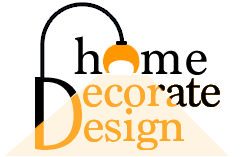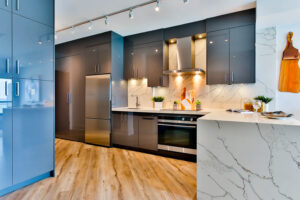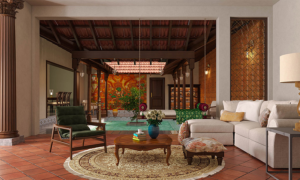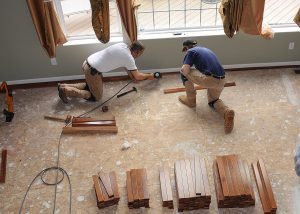
When it comes to home design, the entryway plays an outsized role in shaping visitors’ first impressions. It’s the space that greets guests and potential buyers alike, setting the tone for the rest of the home. Whether you’re designing for your own enjoyment or preparing to sell, a thoughtful welcoming entryway design can enhance both the aesthetic appeal and perceived value of your property. Let’s explore how to make that all-important first impression count with some effective home staging tips and entryway decor ideas.
Why First Impressions Matter
In real estate, first impressions are everything. Potential buyers often decide if a home is right for them within moments of stepping inside. That means the entryway doesn’t just need to look nice; it needs to make people feel invited, comfortable, and eager to see more. A memorable entrance can contribute to your home’s real estate curb appeal, helping it stand out in a competitive market and even boosting its perceived value.
For those just moving in, a welcoming entryway can be equally valuable, creating a sense of warmth and belonging every time you return. Let’s break down the elements that transform an entryway into an unforgettable space.
1. Start with a Clean Slate: Declutter and Organize
The first step to a standout entryway is decluttering. Avoid overcrowding the space with too many decorative items, as a busy entryway can feel chaotic rather than welcoming. Instead, focus on items that serve both a practical and visual purpose.
If your entryway tends to collect shoes, coats, or bags, invest in stylish storage solutions to keep things organized. Wall hooks, baskets, and slim console tables with drawers are practical and prevent clutter from creeping into view. Keeping things tidy not only looks good but also makes the area functional for everyday use—a crucial consideration in first impressions in real estate.
2. Use Color and Lighting to Set the Mood
Color is a powerful tool in design. The right color scheme can make an entryway feel bright and inviting or calm and sophisticated. For smaller entryways, lighter shades can open up the space and create an airy feel, while darker, richer hues like deep blues or charcoals can add a touch of drama and sophistication.
Lighting is equally important. A well-lit entryway makes guests feel safe and comfortable. If natural light is limited, add an eye-catching light fixture like a chandelier or pendant light. Wall sconces or table lamps on a console table can add layers of light and create a warm glow, setting an inviting mood that enhances first impressions in real estate.
3. Add a Statement Piece to Draw the Eye
Every entryway benefits from a focal point, an element that captures attention and gives the space personality. This could be a large mirror, an art piece, or even a carefully chosen console table with decorative accents. Mirrors, in particular, work wonders in entryways because they reflect light and create the illusion of more space.
Choose a statement piece that aligns with the overall decor style of your home. A rustic wooden bench can add charm to a farmhouse-inspired entry, while a sleek, modern console can complement a contemporary design. The idea is to create an entryway that reflects the home’s character, helping visitors feel connected to the space right from the start.
4. Incorporate Greenery for a Natural Touch
Plants are an easy and cost-effective way to breathe life into any room, and the entryway is no exception. Greenery adds vibrancy, texture, and a touch of nature, which instantly makes a space feel more welcoming. Consider low-maintenance plants like snake plants or ferns that can thrive indoors with minimal care.
If you’re staging for real estate, keep in mind that live plants can enhance real estate curb appeal both inside and out. A potted plant on the entryway table or a small arrangement of succulents can provide a fresh, organic touch that resonates with buyers.
5. Rugs: Practical and Aesthetic
A rug does more than protect your flooring from muddy shoes; it also defines the entryway space and adds warmth. When choosing a rug, consider one with a durable material that can handle foot traffic, like jute or wool. Patterned rugs can add visual interest and hide dirt more effectively than solid colors, making them ideal for high-traffic areas.
Rugs also provide an opportunity to introduce color and texture. Whether you choose a bold pattern or a neutral tone, the right rug can tie together other elements of the entryway, creating a cohesive look that’s both practical and stylish.
6. Functional Furniture: Benches and Storage
Adding functional furniture to your entryway, such as a bench or storage cabinet, elevates both style and utility. A bench gives guests a place to sit while they remove their shoes and provides a convenient spot to set down bags. Choose a bench with a built-in shoe rack or one that has a shelf underneath for extra storage.
If space is limited, a narrow console table can also serve as a catch-all for keys, mail, and other items. Furniture that combines functionality with aesthetic appeal is a cornerstone of welcoming entryway design, making it easier to keep the area neat while maximizing its purpose.
7. Personal Touches: Art, Photos, and Decor
Your entryway should feel like an introduction to your home. Personal touches like artwork, framed photos, or decorative objects can make the space feel unique and welcoming. For example, a gallery wall featuring family photos or meaningful artwork can add character to an otherwise utilitarian area.
When staging for real estate, opt for decor that’s tasteful and relatively neutral to appeal to a broader audience. A single statement piece, like a large abstract painting, can provide visual interest without overwhelming the space. Striking the right balance between personality and simplicity is one of the best home staging tips for creating a memorable first impression.
8. Don’t Forget the Exterior
The entryway begins before a guest or potential buyer even steps inside. For ultimate real estate curb appeal, pay attention to the exterior of your entryway. A freshly painted front door in a welcoming color, clean and polished hardware, and well-maintained landscaping all set a positive tone.
Consider adding a welcome mat, potted plants, or seasonal decorations on the porch. Small exterior updates can make a big impact, showing that the home is well-cared for and inviting. An inviting exterior primes guests and buyers for what’s inside, making them more receptive to the charms of your entryway decor.
9. Appeal to the Senses
Creating a warm, welcoming entryway goes beyond what people see; it also involves what they feel, smell, and even hear. Subtle touches like a pleasant scent—think fresh eucalyptus or a scented candle—can make an entryway feel cozy and memorable. Soft background music can also enhance the ambiance, helping visitors relax the moment they step in.
When staging for a showing, make sure the entryway is clean, well-ventilated, and free from strong or unpleasant odors. A sensory-friendly space encourages visitors to linger, creating positive associations that enhance first impressions in real estate.
Designing an entryway that feels warm and welcoming is about balancing beauty and functionality. From stylish furniture and well-chosen lighting to thoughtful decor and sensory touches, each element plays a role in setting the tone for the rest of the home. A beautifully crafted entryway can be the difference between a good first impression and an unforgettable one, both for guests and prospective buyers.
If you’re looking to make the best impression possible, consult with an experienced Thousand Oaks Real Estate Agent who understands what local buyers value in a welcoming home. A thoughtfully designed entryway may just be the touch that turns your home from “for sale” to “sold.”





